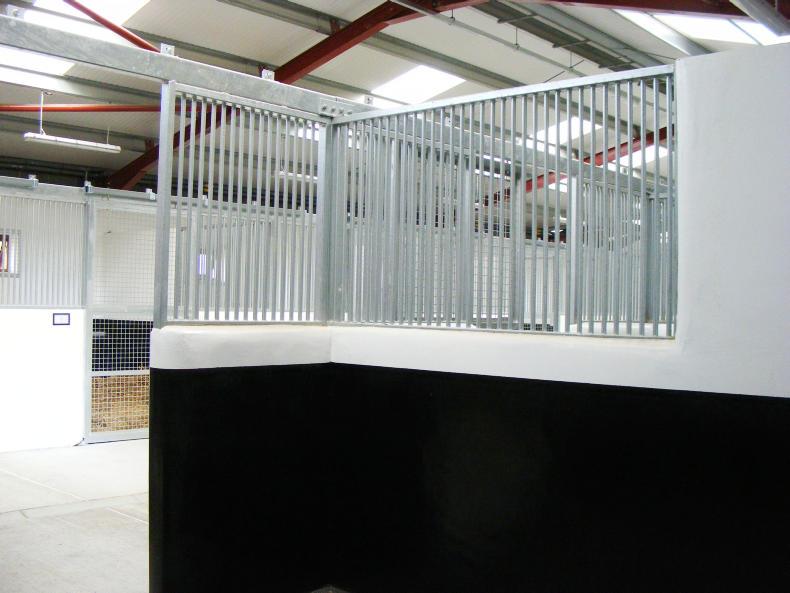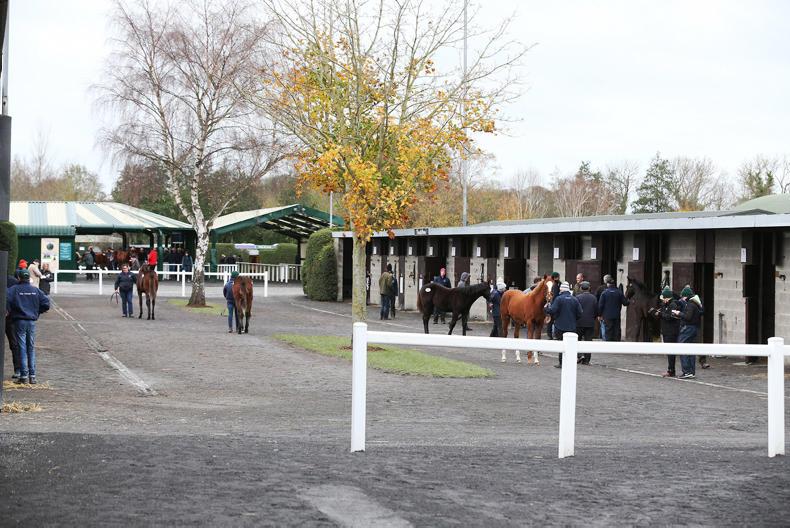THE November foal entries are rolling in and the yearling sales are almost upon us. This year Goffs November Foal Sale will run over five days (Sunday 13th – Thursday 17th) with our inaugural Goffs December Flat Foal Sale taking place on Friday, December 9th.
The November Sale annually attracts the cream of European foal crop. The highest priced foals from the first crops of racing’s greats, Sea The Stars and Frankel, all sold at Goffs. Last November’s top lot was a record price for an Irish colt foal when a Dubawi colt sold to John Ferguson for €1.1m.
This year already looks to be matching the quality of previous years.
The outstanding group of foals that form part of the Wildenstein dispersal and the 2016 Goffs November Foal Sale look sure to attract foal buyers from around the world once again. It is therefore imperative that vendors have their foals registered at this time of year through Weatherbys and have considered the various schemes which they are eligible for, such as Plus 10.
The old saying “failing to prepare is preparing to fail” has never rang truer than when it comes to foal prep.
Our foals at Esker Lodge Stud are handled extensively in their first few weeks of life and are all leading in and out of their paddocks alongside their dams from day one. We are lucky to have dedicated staff members, Sarah Tyrrell and Allen Sharkey, to ensure that the foals are handled correctly. Foals that are well handled and trained from the beginning make life much easier in the long run as foals can become strong and boisterous before weaning and therefore more difficult to work with.
WEANING

THE CORRECT WALK

Exercise is gradually introduced into the foals daily regime – once the foals have settled into their boxes and are comfortable with being turned out each day. Our foals are only ever hand walked, we do not believe in putting foals on walkers as it increases stress levels and the possibility of the foal getting injured. We’ve also found that several foals do not walk properly while on the walker and often jig-jog, which is not how you want them to present themselves at the sales.
Many foals need to be taught how to ‘walk’ correctly and this can only be achieved by hand walking. We introduce the foals to rubber bits five to six weeks before the sale and gradually introduce leading by the bit.
At the beginning, the foals are walked in groups of two or three, depending on staff, altering which foal leads frequently and they are walked for no more than 10 minutes or so a day. The duration of the hand walking slowly increases and the foals are also taught to stand.
We teach the foals to stand while other foals walk around them and out of view – mirroring as many different aspects that they will encounter at the sales as possible.
We leave the radio on in the stables in order to get the foals acquainted with the sounds at the sales.
The week before the foals are due to travel to the sales our farrier gives them their final trim, we apply hoof hardener daily after this and continue to apply it while the foals are at the sales.
Entries for Goffs November Foal Sale close on September 9th. Entries for Goffs December Flat Foal Sale close on October 10th with an entry fee of €275+VAT. Please contact the team at Goffs if you require any entry forms.
Top 10 sales day tips
1. Foals should be washed the day before they are due to travel, the hair in their ears trimmed and their manes evened and plaited so that it lies on the correct side.
2. Tails can be bandaged up before the foals are loaded onto the horse box and ‘Cribox’ spray put on manes and tail bandages to prevent them being chewed while in transport. We travel the foals in stalls of two or three while on the box and try to pair them with foals that they are used to being turned out with.
3. Once your allocated stable is available at the sales it essential to get your foal into it as early as possible. We also check and drop in all necessary paperwork (passport and health cert) at this time to the sales office.
4. It is crucial that both your foals and staff are ready to show at 8.30am each morning. We try to get the foals walked, mucked out and groomed by 8am. We try to have one person showing per two foals and another member of staff on doors and helping to tack the foals up while another is being shown.
5. Your staff should be up to speed with any updates in the pedigree, and where siblings are in training, or who purchased them if they were recently sold. This is your two-day window to try and sell your foal and information is key. Put an extra card on the stable door containing any major updates.
6. It is important to have your tack polished and to keep the area outside your assigned stables clean, you only get one chance to make a first impression. Have a clear, visible door-sign with at least lot number, sire and dam on it, for colts it is also highly advisable to have a cert to certify that his testicles have descended – this should also be pinned to the stable door.
7. Speak with perspective purchasers while they are viewing your foal and take note of any ‘second looks’ and anyone who has vetted your foal, to get a feel for who is interested.
8. Your auctioneer is there to help you, speak with him beforehand and let him know what reserve you expect to put on the horse. Your reserve should be the minimum amount you are willing to accept for the horse, which often varies greatly from the figure you would like to get for him.
9. Get your foal to the parade ring 10-12 lots before he is due to sell. Check withdrawals beforehand to make sure you are not caught short of time.
10. Have the foals hooves oiled, mane laying on the correct side and their coats show-sheened to within an inch of their lives! The rest is luck.